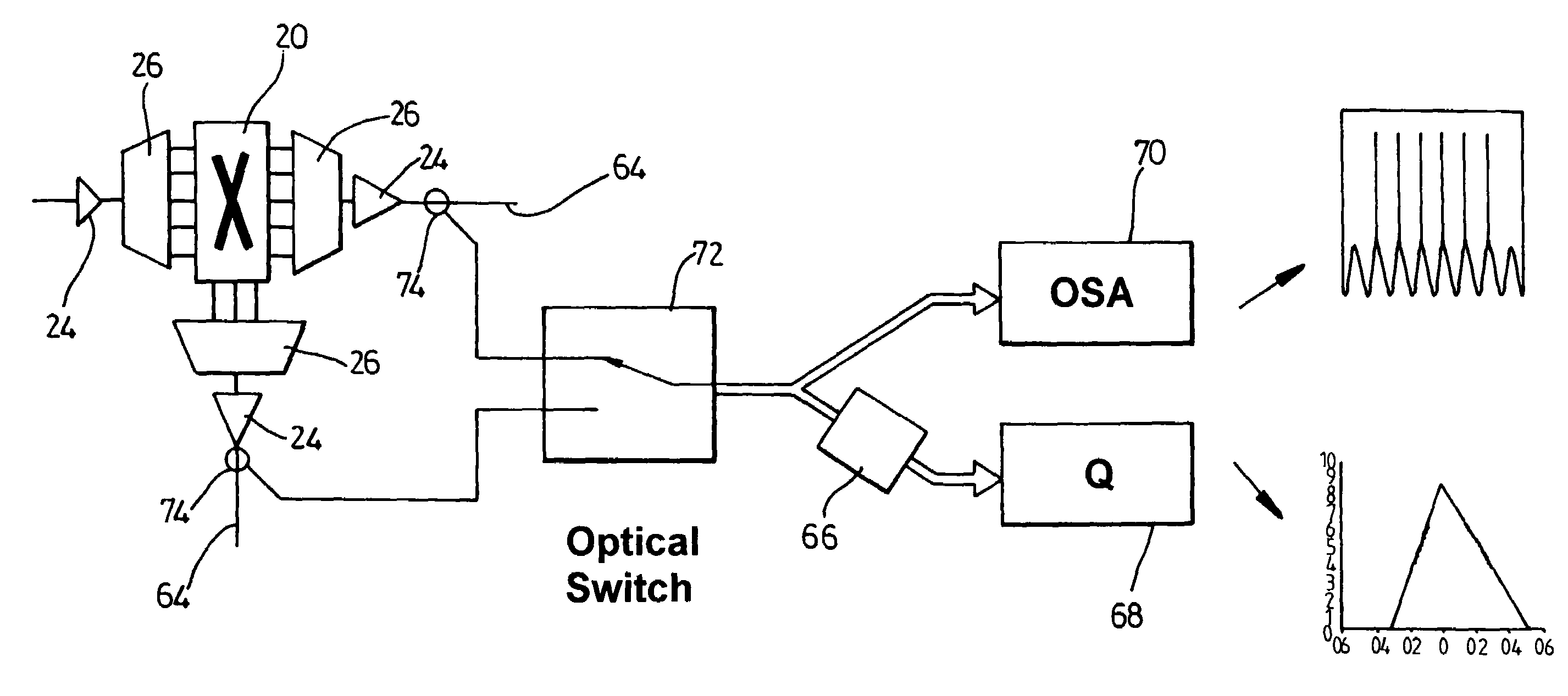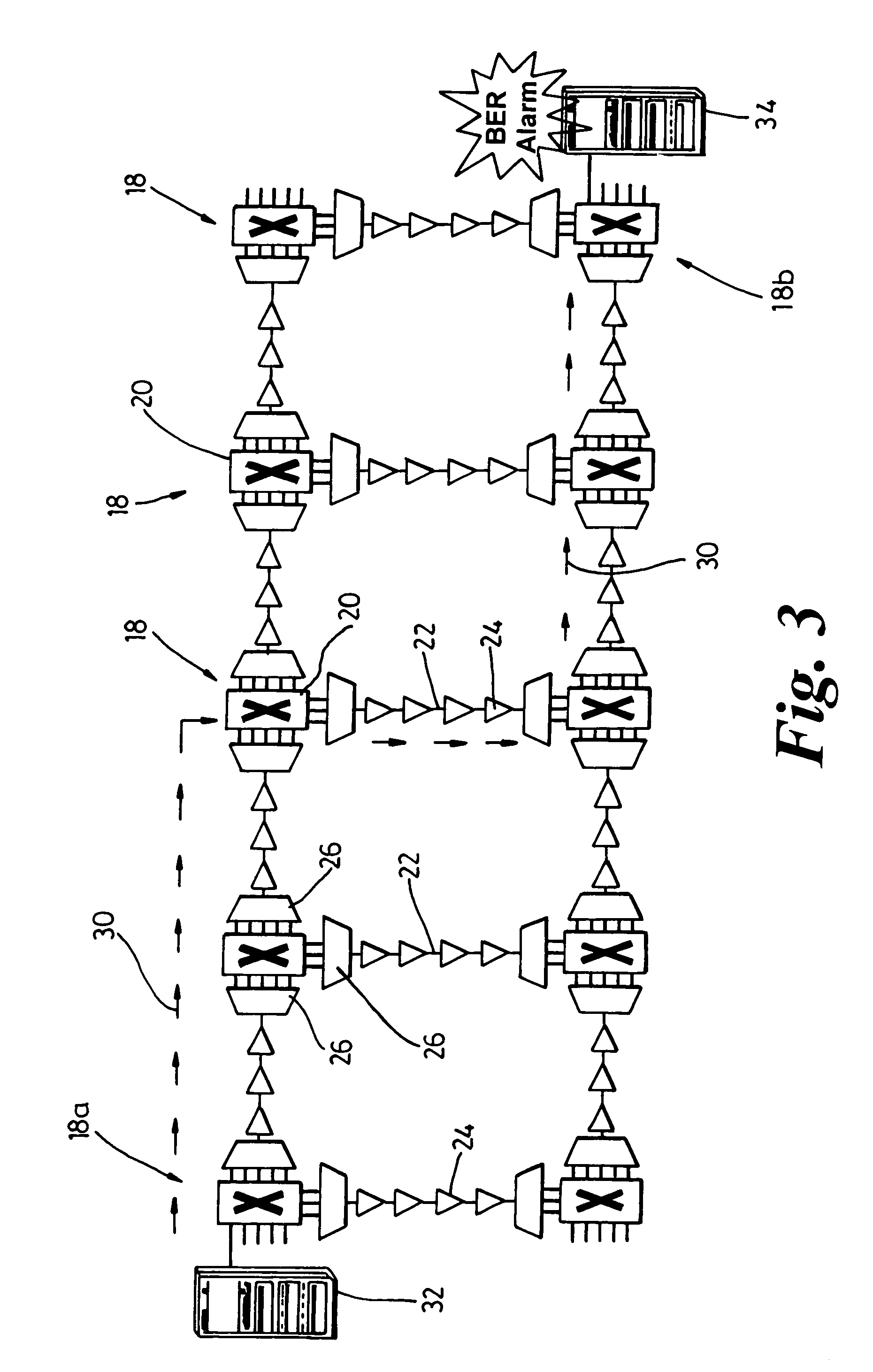Method and apparatus for rapidly measuring optical transmission characteristics in photonic networks
a photonic network and transmission characteristic technology, applied in the direction of instruments, amplitude demodulation, transmission monitoring, etc., can solve the problems of reducing the time taken to build up the error ratio pattern for an individual channel, affecting the accuracy of the obtained signal, and affecting the quality of the received signal
- Summary
- Abstract
- Description
- Claims
- Application Information
AI Technical Summary
Benefits of technology
Problems solved by technology
Method used
Image
Examples
Embodiment Construction
[0042]FIG. 3 shows a WDM optical communications network comprising a plurality of interconnected nodes 18, each node comprising an optical switching arrangement 20 for performing routing of signals across the network. The nodes are connected together by optical fibers 22 along which optical amplifiers 24 are placed. The fibers 22 carry WDM optical signals, and each node comprises a multiplexing / demultiplexing units 26 which provide the individual channels of the WDM system on individual fibers to the switching arrangement 20.
[0043]The arrows 30 indicate one possible connection through the network enabling equipment 32 at a source node 18a to communicate with equipment 34 at a destination node 18b. The equipment 32, 34 is any device which provides optical signals for transmission over the network or which is provided for receiving signals from the network.
[0044]Dense-WDM systems are evolving towards all-optical solutions in which switching and routing take place in the optical domain...
PUM
 Login to View More
Login to View More Abstract
Description
Claims
Application Information
 Login to View More
Login to View More - R&D
- Intellectual Property
- Life Sciences
- Materials
- Tech Scout
- Unparalleled Data Quality
- Higher Quality Content
- 60% Fewer Hallucinations
Browse by: Latest US Patents, China's latest patents, Technical Efficacy Thesaurus, Application Domain, Technology Topic, Popular Technical Reports.
© 2025 PatSnap. All rights reserved.Legal|Privacy policy|Modern Slavery Act Transparency Statement|Sitemap|About US| Contact US: help@patsnap.com



